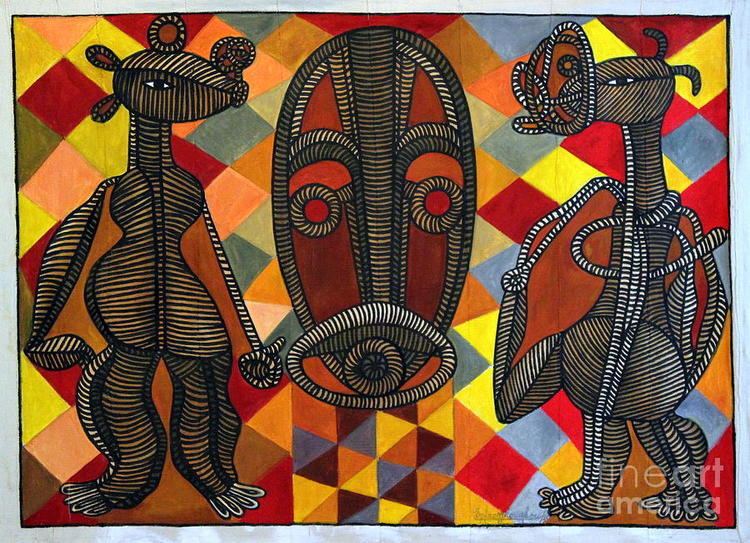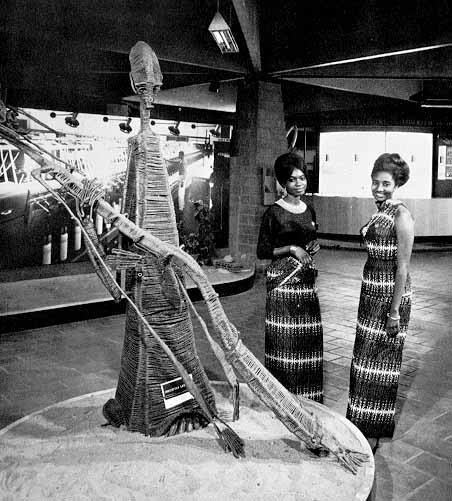Nationality Ivorian Name Christian Lattier | ||
 | ||
Education Ecole nationale superieure des Beaux-Arts | ||
Christian Lattier ( 1925–1978 ) was an Ivorian sculptor born in Grand Lahou, Ivory Coast.
Contents
- Biography
- Influences and impact
- Themes and style
- Movement
- Highlights of career
- Works
- Exhibitions
- Awards
- References

Biography
Christian Lattier is one of the most renowned artist from Côte d'Ivoire. The "bare-handed sculptor", as some called him, emigrated from the Ivory Coast to France as a child. In 1935, at the age of ten, he joined the Marist Brotherhood of Saint-Chamond on the Loire. He began to study in Écoles des Beaux-Arts, Saint-Etienne at twenty-one years old. After a year he transferred to École des Beaux-Arts de Paris where he studied architecture and sculpture. His first position upon graduation was at the architect’s office of Dometh Guth. He was inspired by the African masks and was using strings, wires and reddish colors in his sculptures. In 1947 he moved to Paris, where he was soon acknowledged for his artistic ability and the distinct style of his works. He returned to the Ivory Coast in 1962 to teach as a professor for sculptural art at the École Nationale des Beaux-Arts in Abidjan. In 1978 he died in Abdijan, Cote d'Ivoire.
Influences and impact
Christian Lattier was influenced by centuries-old traditions in European and West African cultures. He was inspired by the African masks and was using strings, wires and reddish colors in his sculptures. Nineteen pieces of Christian Lattier's sculptures are currently in the collection of "Musée National de Côte d'Ivoire" in Abidjan. Also, he is considered to be the most renowned artist from Côte d'Ivoire.
Themes and style
Christian Lattier’s style was to use the traditional West African technique of weaving a mask around a center of wire or tie it up with ideas derived mainly from European art and cultural history. The mediums that Lattier worked with were stone, wire, wood, and a strong hemp fibre.
Movement
He was a part of “The Short Century” which was an exhibition on independence and liberation movements in Africa in between 1945-1994 that traveled to Munich, Berlin, Chicago, and NY from May 18, 2001 to July 29, 2001.
Highlights of career
One of his most famous works was a statue named “The Chicken Thief or the Victory of Samothrace.” It was made in 1962 with string and wire and is around 4.2 feet high. Another work “Mask” that Lattier created in 1975 also garnered attention due to his use of traditional techniques that referred back to West African traditions.
Works
In 1966 he won the grand prize of "World Festival of Black Arts" in Dakar. 19 pieces of Lattier's sculptures are currently in the collection of "Musée National de Côte d'Ivoire" in Abidjan.
